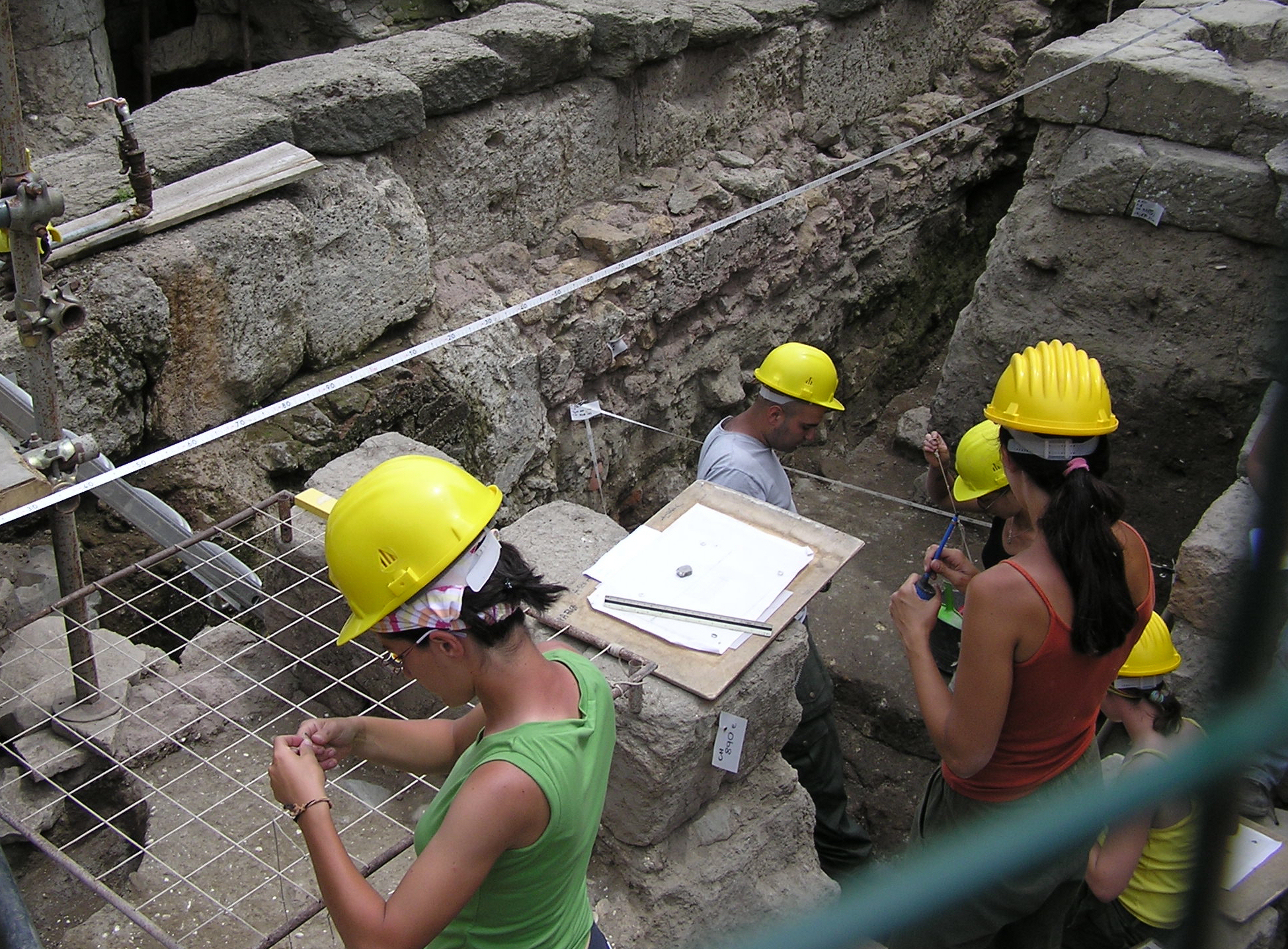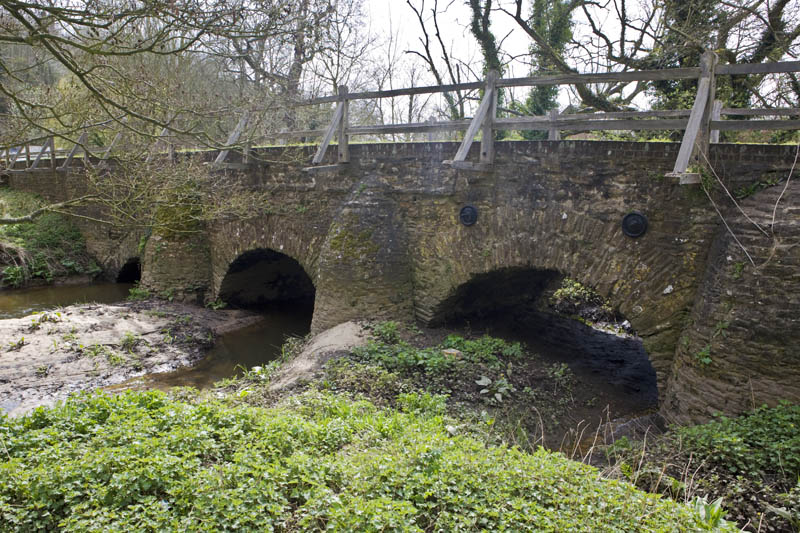|
Tranmer House, Sutton Hoo
Tranmer House is a country house in Sutton Hoo, Woodbridge, Suffolk, England, dating from 1910. The house is located on the Sutton Hoo Anglo-Saxon burial site, and in 1938 was the home of Edith Pretty. In June 1938, Pretty employed Basil Brown to undertake the excavation of a range of burial mounds on the estate, leading to Brown's discovery in May 1939 of a ship burial, "one of the most important archaeological discoveries of all time". The house is now owned by the National Trust. History and description Tranmer House, then called Sutton Hoo House, was designed in 1910 by John Shewell Corder, an architect based in Ipswich, for a Suffolk artist, John Chadwick Lomax. In 1926 the Sutton Hoo estate was bought by Edith Pretty and her husband, Frank, for £15,250. Edith Pretty, born Edith Dempster in 1883, inherited a considerable fortune from her father upon his death in 1925. Following Frank Pretty's death in 1934, Edith Pretty developed an interest in excavating the burial mound ... [...More Info...] [...Related Items...] OR: [Wikipedia] [Google] [Baidu] |
Sutton Hoo
Sutton Hoo is the site of two Anglo-Saxon cemeteries dating from the 6th to 7th centuries near Woodbridge, Suffolk, England. Archaeology, Archaeologists have been excavating the area since 1938, when an undisturbed ship burial containing a wealth of Anglo-Saxon artifacts was discovered. The site is important in establishing the history of the Anglo-Saxon kingdom of East Anglia as well as illuminating the Anglo-Saxons during a period which lacks historical documentation. The site was first excavated by Basil Brown, a self-taught archaeologist, under the auspices of the landowner Edith Pretty, but when its importance became apparent, national scholars took over. The artefacts the archaeologists found in the burial chamber include: a suite of metalwork dress fittings in gold and gems, a ceremonial helmet, a shield and sword, a Anglo-Saxon lyre, lyre, and silver plate from the Eastern Roman Empire. The ship burial has prompted comparisons with the world of ''Beowulf''. The Old Engl ... [...More Info...] [...Related Items...] OR: [Wikipedia] [Google] [Baidu] |
Nikolaus Pevsner
Sir Nikolaus Bernhard Leon Pevsner (30 January 1902 – 18 August 1983) was a German-British art historian and architectural historian best known for his monumental 46-volume series of county-by-county guides, ''The Buildings of England'' (1951–74). Life Nikolaus Pevsner was born in Leipzig, Kingdom of Saxony, Saxony, the son of Anna and her husband Hugo Pevsner, a Russian-Jewish fur merchant. He attended St. Thomas School, Leipzig, and went on to study at several universities, Ludwig Maximilian University of Munich, Munich, Humboldt University of Berlin, Berlin, and Goethe University Frankfurt, Frankfurt am Main, before being awarded a doctorate by Leipzig University, Leipzig in 1924 for a thesis on the Architecture of Leipzig#Leipzig bourgeois town houses and oriel windows of the Baroque era, Baroque architecture of Leipzig. In 1923, he married Carola ("Lola") Kurlbaum, the daughter of distinguished Leipzig lawyer Alfred Kurlbaum. He worked as an assistant keeper at the Ge ... [...More Info...] [...Related Items...] OR: [Wikipedia] [Google] [Baidu] |
Archaeological Sites In Suffolk
Archaeology or archeology is the study of human activity through the recovery and analysis of material culture. The archaeological record consists of Artifact (archaeology), artifacts, architecture, biofact (archaeology), biofacts or ecofacts, archaeological site, sites, and cultural landscapes. Archaeology can be considered both a social science and a branch of the humanities. It is usually considered an independent academic discipline, but may also be classified as part of anthropology (in North America – the four-field approach), history or geography. The discipline involves Survey (archaeology), surveying, Archaeological excavation, excavation, and eventually Post excavation, analysis of data collected, to learn more about the past. In broad scope, archaeology relies on cross-disciplinary research. Archaeologists study human prehistory and history, from the development of the first stone tools at Lomekwi in East Africa 3.3 million years ago up until recent decades. A ... [...More Info...] [...Related Items...] OR: [Wikipedia] [Google] [Baidu] |
Archaeological Museums In England
Archaeology or archeology is the study of human activity through the recovery and analysis of material culture. The archaeological record consists of artifacts, architecture, biofacts or ecofacts, sites, and cultural landscapes. Archaeology can be considered both a social science and a branch of the humanities. It is usually considered an independent academic discipline, but may also be classified as part of anthropology (in North America – the four-field approach), history or geography. The discipline involves Survey (archaeology), surveying, Archaeological excavation, excavation, and eventually Post excavation, analysis of data collected, to learn more about the past. In broad scope, archaeology relies on cross-disciplinary research. Archaeologists study human prehistory and history, from the development of the first stone tools at Lomekwi in East Africa 3.3 million years ago up until recent decades. Archaeology is distinct from palaeontology, which is the study of ... [...More Info...] [...Related Items...] OR: [Wikipedia] [Google] [Baidu] |
Anglo-Saxon Art
Anglo-Saxon art covers art produced within the Anglo-Saxons, Anglo-Saxon period of English history, beginning with the Migration period art, Migration period style that the Anglo-Saxons brought with them from the continent in the 5th century, and ending in 1066 with the Norman Conquest of England, whose sophisticated art was influential in much of northern Europe. The two periods of outstanding achievement were the 7th and 8th centuries, with the metalwork and jewellery from Sutton Hoo and a series of magnificent illuminated manuscripts, and the final period after about 950, when there was a revival of English culture after the end of the Viking invasions. By the time of the Conquest the move to the Romanesque art, Romanesque style is nearly complete. The important artistic centres, in so far as these can be established, were concentrated in the extremities of England, in Northumbria, especially in the early period, and Wessex and Kent near the south coast. Anglo-Saxon art sur ... [...More Info...] [...Related Items...] OR: [Wikipedia] [Google] [Baidu] |
1939 Archaeological Discoveries
This year also marks the start of the Second World War, the largest and deadliest conflict in human history. Events Events related to World War II have a "WWII" prefix. January * January 1 ** Coming into effect in Nazi Germany of: *** The Protection of Young Persons Act, passed on April 30, 1938, the Working Hours Regulations. *** The small businesses obligation to maintain adequate accounting. *** The Jews name change decree. ** With his traditional call to the New Year in Nazi Germany, Führer and Reich Chancellor Adolf Hitler addresses the members of the National Socialist German Workers' Party (NSDAP). ** The Hewlett-Packard technology and scientific instruments manufacturing company is founded by Bill Hewlett and David Packard, in a garage in Palo Alto, California, considered the birthplace of Silicon Valley. ** Philipp Etter takes over as President of the Swiss Confederation. ** The Third Soviet Five Year Plan is launched. * January 5 – Pioneering U.S. ... [...More Info...] [...Related Items...] OR: [Wikipedia] [Google] [Baidu] |
1938 Archaeological Discoveries
Events January * January 1 – state-owned enterprise, State-owned railway networks are created by merger, in France (SNCF) and the Netherlands (Nederlandse Spoorwegen – NS). * January 20 – King Farouk of Egypt marries Safinaz Zulficar, who becomes Farida of Egypt, Queen Farida, in Cairo. * January 27 – The Honeymoon Bridge (Niagara Falls), Honeymoon Bridge at Niagara Falls, New York, collapses as a result of an ice jam. February * February 4 ** Adolf Hitler abolishes the War Ministry and creates the Oberkommando der Wehrmacht (High Command of the Armed Forces), giving him direct control of the German military. In addition, he dismisses political and military leaders considered unsympathetic to his philosophy or policies. General Werner von Fritsch is forced to resign as Commander of Chief of the German Army following accusations of homosexuality, and replaced by General Walther von Brauchitsch. Foreign Minister Baron Konstantin von Neurath is dismi ... [...More Info...] [...Related Items...] OR: [Wikipedia] [Google] [Baidu] |
National Trust Properties In Suffolk
National may refer to: Common uses * Nation or country ** Nationality – a ''national'' is a person who is subject to a nation, regardless of whether the person has full rights as a citizen Places in the United States * National, Maryland, census-designated place * National, Nevada, ghost town * National, Utah, ghost town * National, West Virginia, unincorporated community Commerce * National (brand), a brand name of electronic goods from Panasonic * National Benzole (or simply known as National), former petrol station chain in the UK, merged with BP * National Book Store, a bookstore and office supplies chain in the Philippines * National Car Rental, an American rental car company * National Energy Systems, a former name of Eco Marine Power * National Entertainment Commission, a former name of the Media Rating Council * National Motor Vehicle Company, Indianapolis, Indiana, USA 1900–1924 * National Radio Company, Malden, Massachusetts, USA 1914–1991 * National Supermarket ... [...More Info...] [...Related Items...] OR: [Wikipedia] [Google] [Baidu] |
Country Houses In Suffolk
A country is a distinct part of the world, such as a state, nation, or other political entity. When referring to a specific polity, the term "country" may refer to a sovereign state, state with limited recognition, constituent country, or dependent territory. Most sovereign states, but not all countries, are members of the United Nations. There is no universal agreement on the number of "countries" in the world, since several states have disputed sovereignty status or limited recognition, and a number of non-sovereign entities are commonly considered countries. The definition and usage of the word "country" are flexible and have changed over time. ''The Economist'' wrote in 2010 that "any attempt to find a clear definition of a country soon runs into a thicket of exceptions and anomalies." Areas much smaller than a political entity may be referred to as a "country", such as the West Country in England, "big sky country" (used in various contexts of the American West), "coal ... [...More Info...] [...Related Items...] OR: [Wikipedia] [Google] [Baidu] |
National Trust For Places Of Historic Interest Or Natural Beauty
The National Trust () is a heritage and nature conservation charity and membership organisation in England, Wales and Northern Ireland. The Trust was founded in 1895 by Octavia Hill, Sir Robert Hunter and Hardwicke Rawnsley to "promote the permanent preservation for the benefit of the Nation of lands and tenements (including buildings) of beauty or historic interest". It has since been given statutory powers, starting with the National Trust Act 1907. Historically, the Trust acquired land by gift and sometimes by public subscription and appeal, but after World War II the loss of country houses resulted in many such properties being acquired either by gift from the former owners or through the National Land Fund. One of the largest landowners in the United Kingdom, the Trust owns almost of land and of coast. Its properties include more than 500 historic houses, castles, archaeological and industrial monuments, gardens, parks, and nature reserves. Most properties are open ... [...More Info...] [...Related Items...] OR: [Wikipedia] [Google] [Baidu] |
Yale University Press
Yale University Press is the university press of Yale University. It was founded in 1908 by George Parmly Day and Clarence Day, grandsons of Benjamin Day, and became a department of Yale University in 1961, but it remains financially and operationally autonomous. , Yale University Press publishes approximately 300 new hardcover A hardcover, hard cover, or hardback (also known as hardbound, and sometimes as casebound (At p. 247.)) book is one bookbinding, bound with rigid protective covers (typically of binder's board or heavy paperboard covered with buckram or other clo ... and 150 new paperback books annually and has a backlist of about 5,000 books in print. Its books have won five National Book Awards, two National Book Critics Circle Awards and eight Pulitzer Prizes. The press maintains offices in New Haven, Connecticut and London, England. Yale is the only American university press with a full-scale publishing operation in Europe. It was a co-founder of the dist ... [...More Info...] [...Related Items...] OR: [Wikipedia] [Google] [Baidu] |
Shackleford
Shackleford is a village and civil parish in the Borough of Guildford, Surrey, England centred to the west of the A3 between Guildford and Petersfield southwest of London and southwest of Guildford. Shackleford includes the localities of Eashing, Hurtmore, Norney and Gatwick. History The village does not appear in the Domesday Book of 1086; however, Hurtmore manor in the east of the parish and Rodsall manor, just to the west of the parish, a far-south part of Puttenham, do appear. The name first appears in 1220, as ''Sakelesford'', and appears in a variety of mostly quite minor variants thereafter. The second element, ''-ford'', is self-explanatory, but the etymology of the "Shackle-" element is uncertain. One possibility is that it is from Old English ''sceacol'' 'a shackle', perhaps with reference to a chain used to aid in crossing the river. Alternatively, there may have been an unattested Old English adjective ''*sceacol'' 'shaky, loose' from the stem of the Old Engl ... [...More Info...] [...Related Items...] OR: [Wikipedia] [Google] [Baidu] |









